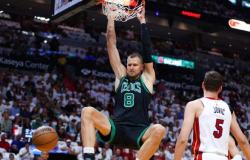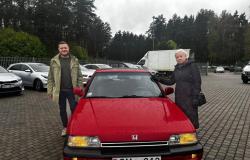NATO soldiers
Photo. (Scanpix/Ronny Hartmann/AFP)
The current US debate over additional military aid to Ukraine is based in part on the assumption that the war will remain stalemated regardless of US action. This assumption is false. The Russians are breaking out of positional warfare and are beginning to resume battlefield maneuvers as US military aid to Ukraine is delayed, extensive ISW modeling shows.
“The green one the course is right here at the threshold,” plans to ban the heating of firewood, briquettes and pellets
ARTICLE EDITOR
“This is not the first signal that something is wrong in our country” – Horen Stalbe openly about his feelings after the attack in the gas tank
A mother is horrified to discover that the newborn baby she was caring for at the hospital is not her own
Read other posts
Ukraine cannot maintain its current position without prompt US assistance, especially air defense and artillery support, which only the US can provide. The lack of anti-aircraft defenses has exposed Ukrainian front-line units to Russian airstrikes.
The lack of Ukrainian artillery for the first time since 2022 allows the Russians to use armed columns of soldiers without suffering excessive losses.
The Russians are pressing their advantage and are slowly but steadily advancing in several sectors of the front. Since the beginning of this year, Russian forces have seized more than 360 square kilometers.
Russian advances will accelerate without urgent American action.
US policymakers must factor into their plans the reality of continued American military aid
delay or suspension will lead to dramatic Russian gains later in 2024 and 2025 and ultimately to a Russian victory.
Thus, the United States has only two real choices today. It can quickly resume military aid to allow Ukraine to stabilize the front lines near their current locations. Or it may allow the Russians to defeat Ukrainian troops and occupy NATO’s borders from the Black Sea to central Poland. There is no third option.
The risks of a Russian attack on NATO in the near future would increase dramatically, according to ISW modeling, if the US allows Russia to defeat Ukraine already, and especially the challenge of the defense of the Baltic states could become almost insurmountable. These long-term risks and costs far outweigh the short-term price of resuming aid to Ukraine.
On the other hand, a Ukrainian success, even if Ukraine only holds the front lines roughly where they are now, would make a successful Russian attack on Poland or the Baltics much more difficult and risky. This would significantly strengthen NATO’s ability to deter and defend against future Russian aggression.
A successful Ukrainian army will be the largest and most powerful in Europe after Russia – far more powerful than any European NATO country.
Ukraine will deploy its forces along the borders with Russia and Belarus to deter and defend against further Russian aggression. Ukraine will initially rely on continued aid in the form of equipment, but over time mainly in the form of money, to purchase and maintain its equipment, from many European and Asian countries that well understand the importance of preventing a Russian attack.
If Russia defeats Ukraine, NATO will face enormous challenges in defending its northeastern members. The Ukrainians, of course, will not submit to the conquest, a mass Ukrainian uprising will very likely follow.
But the Russians are already preparing a force different from their regular military to deal with such insurgent activity.
The Russians will also recruit hundreds of thousands or even millions of Ukrainians into military service, as well as take over the defense industrial base that the Ukrainians are currently building, significantly increasing Russia’s military and economic potential.
Therefore, in this dire scenario, NATO must count on large Russian conventional forces along its entire border from the Black Sea to the Arctic,
spanning the borders of Poland, Hungary, southern Slovakia, and Romania, which are under threat of a Russian land attack for the first time since the collapse of the Soviet Union.
This threat would squeeze NATO forces in southeastern Europe and draw additional forces from the United States and Western European NATO countries to southern and central Europe, denying NATO reserves that would otherwise be available to quickly reinforce the Baltic states in the event of a Russian threat.
These NATO troops, inexperienced in modern mechanized warfare, would look up to battle-hardened Russian troops, emboldened by their victory in Ukraine.
Themes
Tags: ISW WorstCase Scenario Russias Conventional Forces Black Sea Arctic
-





